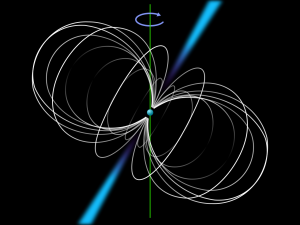Pulsars [1]
In the fall of 1967, Jocelyn Bell was looking for a “scruffy” source of radio waves in the constellation Vulpecula. Bell was working on her PhD at Cambridge University in England. She’d been using a new radio telescope to study quasars — brilliant objects billions of light-years away.
The telescope’s observations were recorded on chart paper. And one day that summer, the chart showed what Bell later called “a bit of scruff” — an odd signal that had never been seen before.
Bell continued her quasar work. But when she was done, she decided to check out the odd signal. She used a faster recorder, which spread out the signal, allowing her to see its details. And 50 years ago this week, she got a clear result — a series of pulses that were one-and-a-third seconds apart.
Bell and her adviser, Anthony Hewish, ruled out satellites and other forms of interference. And a colleague determined the source was far outside the solar system.
For a while, the astronomers considered that the pulses might have come from another civilization. But in December and January, Bell found similar signals from three other sources — suggesting that they were natural objects.
When the discovery was announced, another astronomer suggested the sources were the dead cores of mighty stars — something that had been predicted, but never seen. Those objects were soon called pulsars — bizarre stellar corpses discovered half a century ago.
More about pulsars tomorrow.
Script by Damond Benningfield
Keywords:
- Astronomers [3]
- History of Astronomy [4]
- Pulsars [5]
- Radio Astronomy [6]


